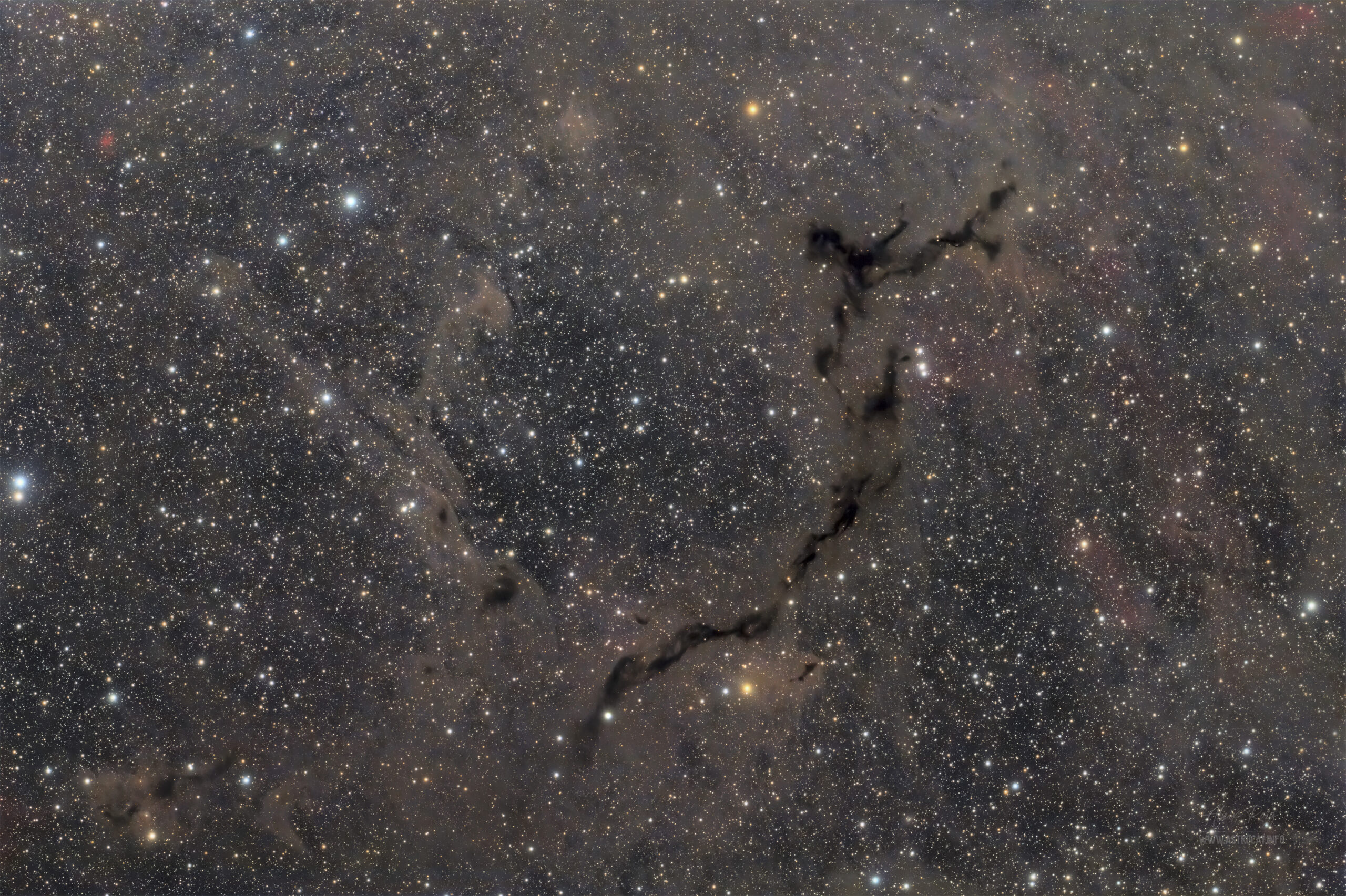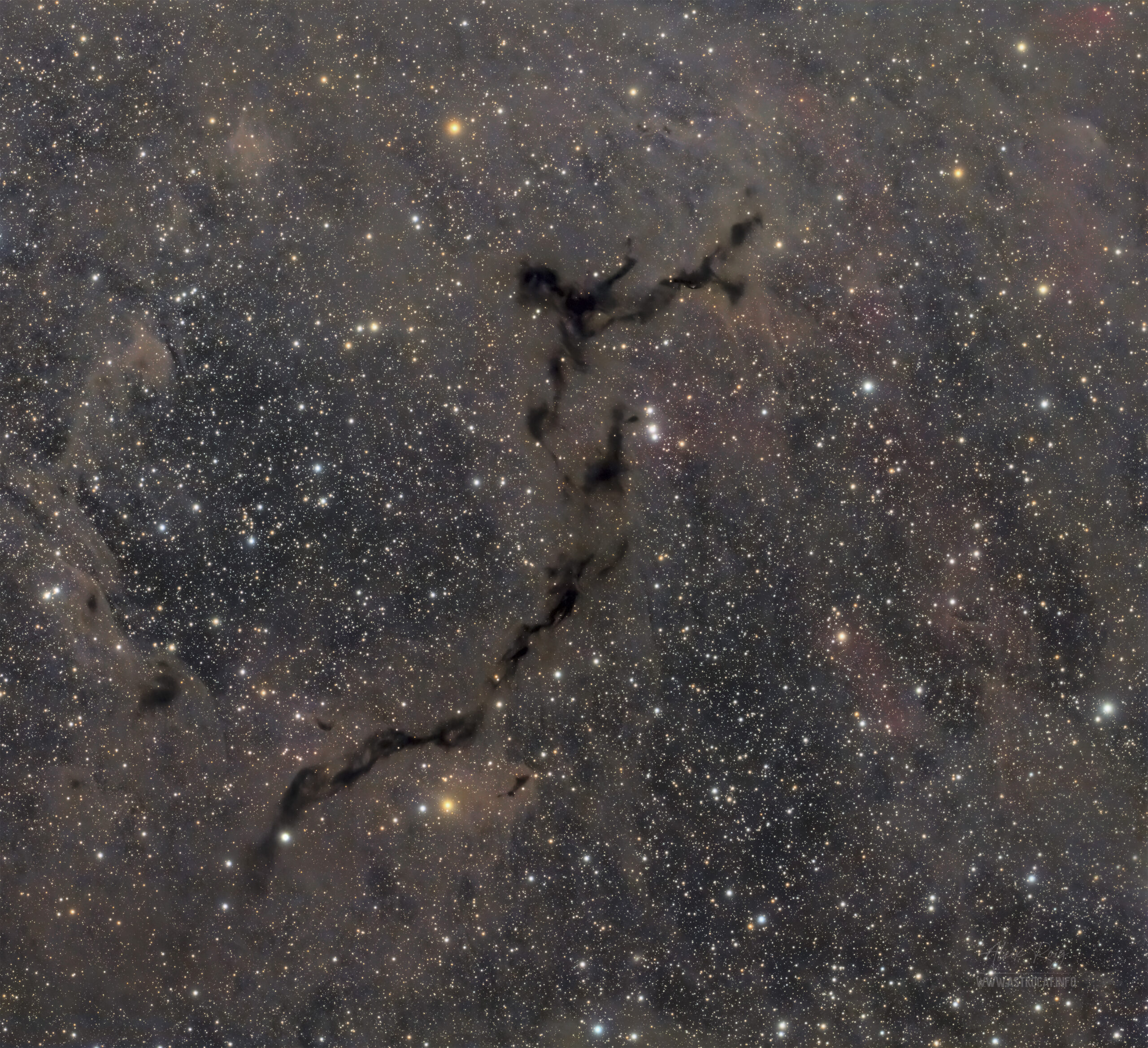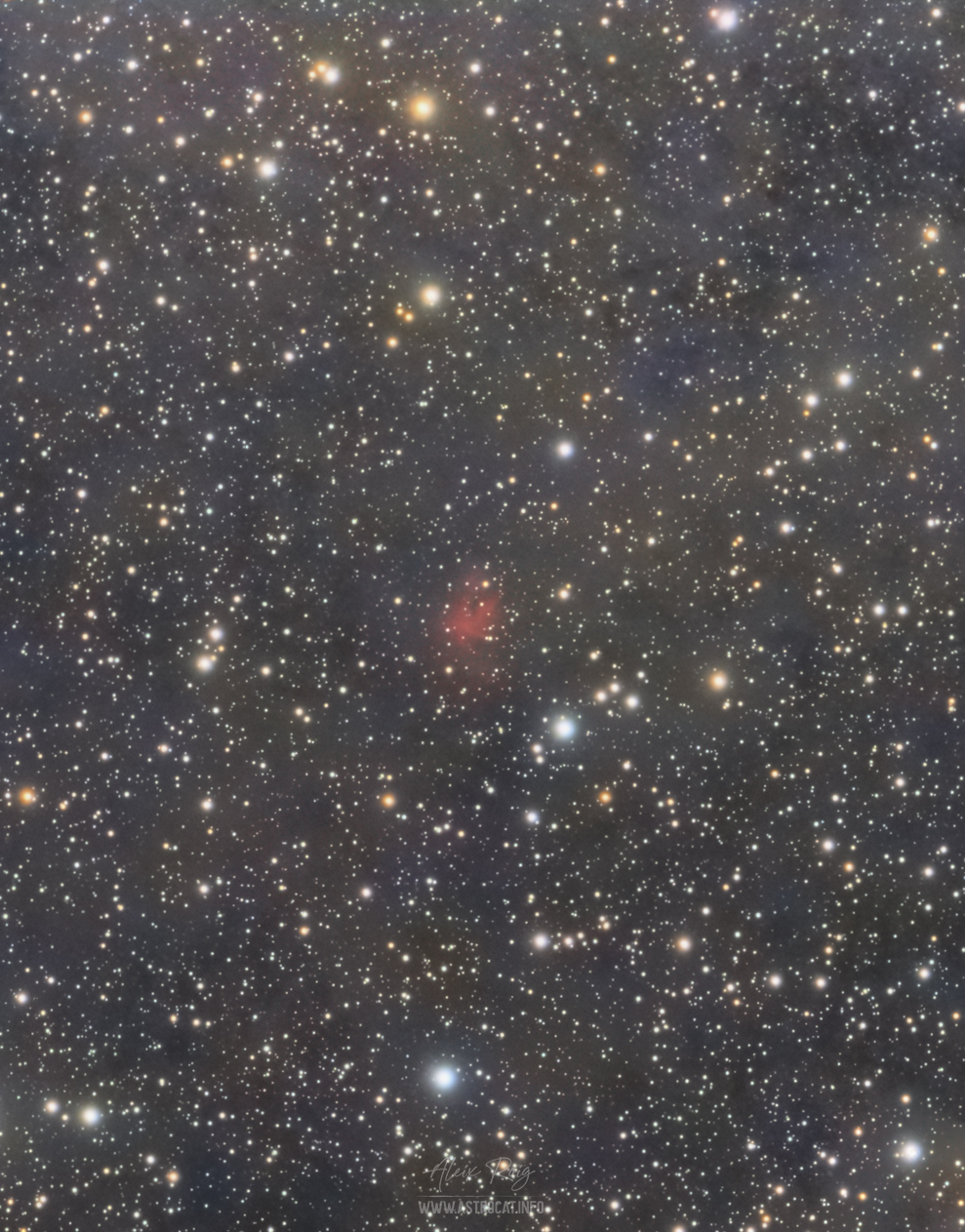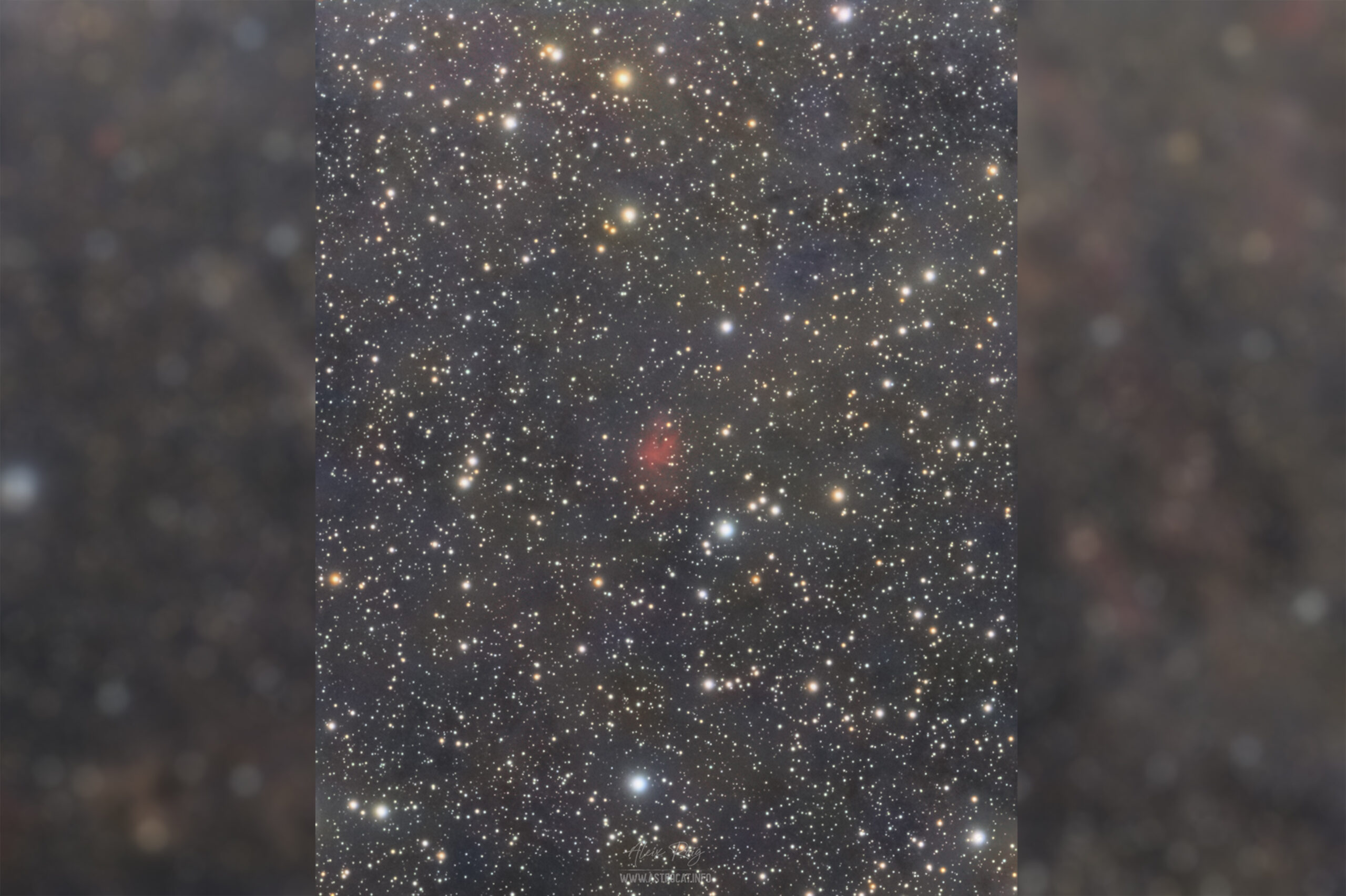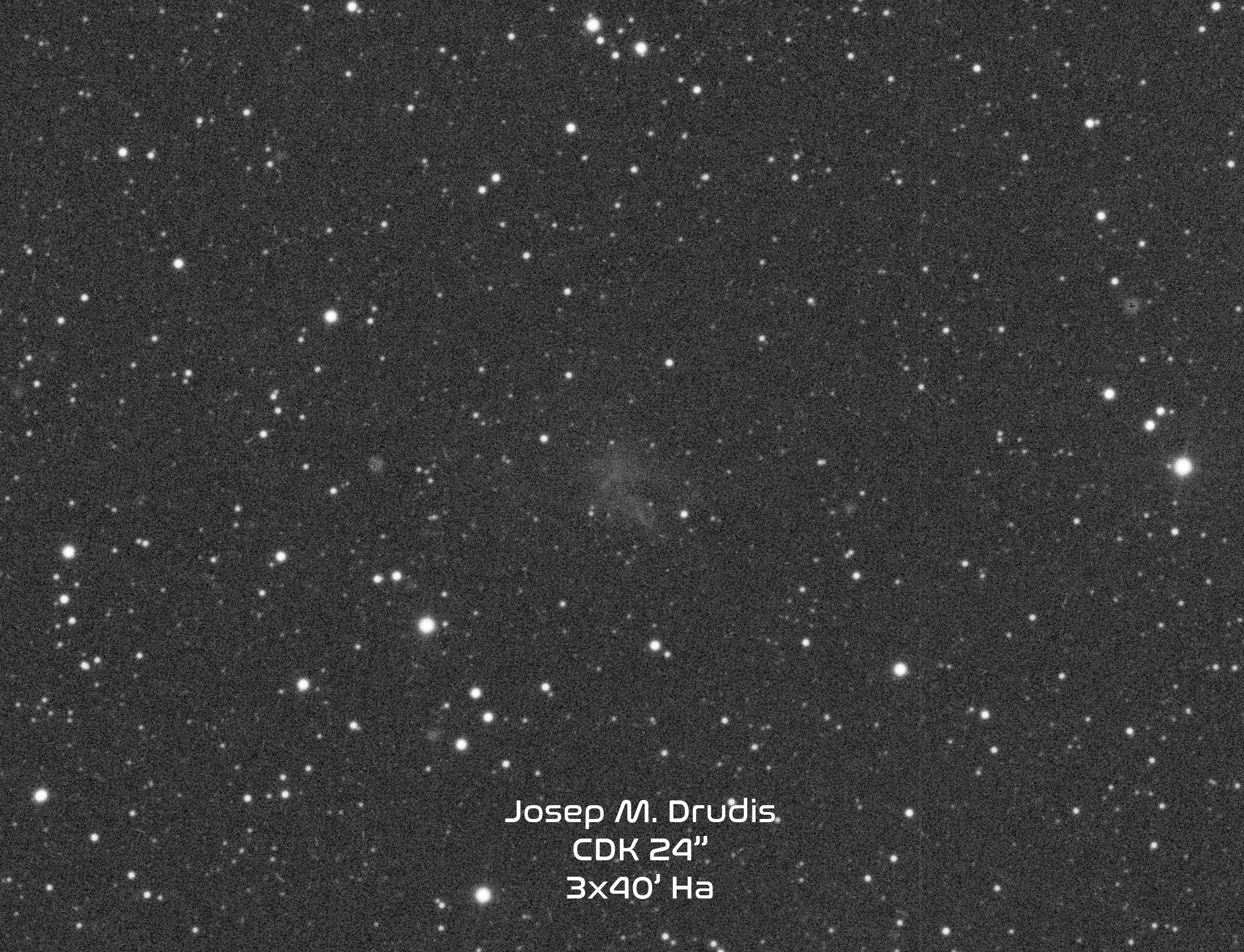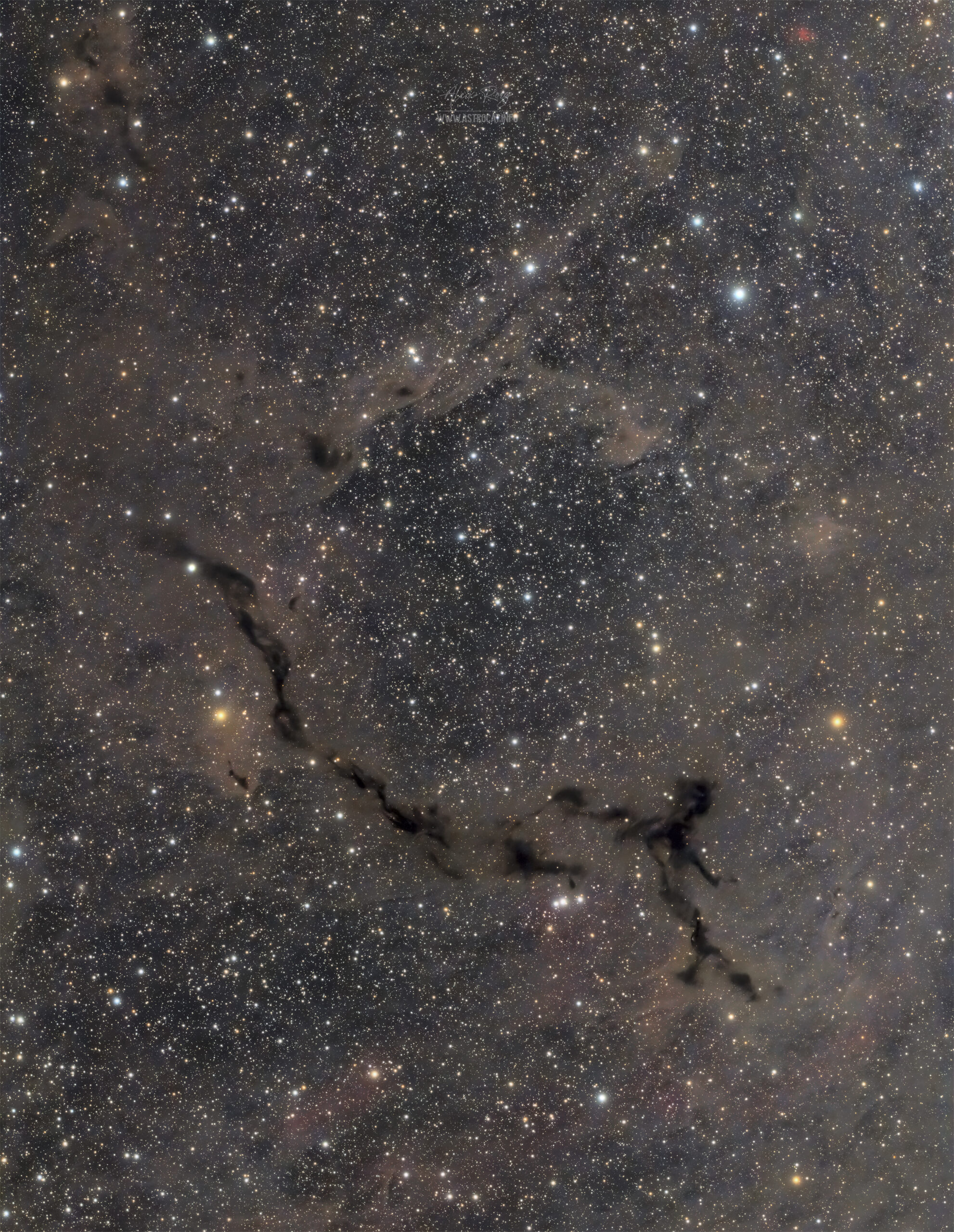Barnard 150, also catalogued as LDN 1082, is a dark nebula located some 1,200 light-years from Earth in the Cepheus constellation. Unlike emission or reflection nebulae that emit or reflect light, dark nebulae are composed of dense, cold gas and dust that block the light from objects or stars behind them. They are often seen as inky, black patches against the background of brighter stars or nebulae.
Also known as the Seahorse nebula, it takes the name due to its shape that appears against a rich, luminous background field of stars. Dark nebulae like B150 are regions where interstellar dust and gas are so thick that they obscure the light from stars or other objects located beyond them. This nebula is part of a larger complex of dark nebulae known as the Barnard Dark Nebulae catalog, which was compiled by the American astronomer Edward Emerson Barnard in the early 20th century.
About the image and a deep Ha approach:
Thanks for taking your time on this site.
Image Details
FSQ106:
L: 403 x 300″ (33h35′)
RGB: (120,120,120) x 30″ (3h)
FSQ85:
Ha: 341 x 300″ (28h25′)
Calibrated with darks, flats and dark-flats.
Total exposure: 65h
Moon at 15% (on average)
Image resolution: 1.46”/pixel
FOV (full image): 2º28′ x 1º38′
Equipment
FSQ106 EDX4 + ASI2600MM + LRGB Astrodon filters + Ha3nm Antlia – with ZWO EFW 7 pos
FSQ85 + ASI294MM + SHO LRGB Baader filters – with ZWO EFW 8 pos
Mesu200 mount
Guiding with ASI120MM and ZWO Mini Guide Scope
Software
SGP, PHD2, APP, PIX, LR, TPZ, PS.
Aleix Roig, September 2023
Prades (Tarragona, Catalonia – Spain).
Full HD image on Astrobin.

